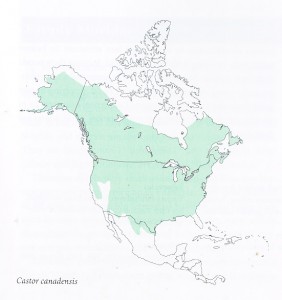
Beavers covered most of North America prior to 1700. It is estimated that over 60 to 200 million beavers populated the range shown on the map. The beaver’s influence touched every watershed in North America. Assuming 100 million beavers in the United States and 8 beavers per dam, there may have been an average of 250,000 ponds per state! Beaver dams significantly influenced erosion/deposition patterns over the entire country. The sediments that were dislodged from the naturally vegetative covered land were often recaptured in the natural stilling ponds created by beaver dams. Water after passing through beaver ponds and wetlands was of better quality with reduced sediment load. The natural energy dissipative characteristics of the spill side of these dams further reduced the erosive potential of flowing streams. Erosive energy was dissipated in the seepage through, and over the beaver dam.
In the 1805 Lewis and Clark expedition up the Missouri River, beavers were observed wherever the habitat was suitable for them. The water transportation systems of the Native Americans also must have been assisted by the numerous beaver dams. The elevated water tables also improved the vegetative ecosystem. These ideas are substantiated by an EPA Bibliography.